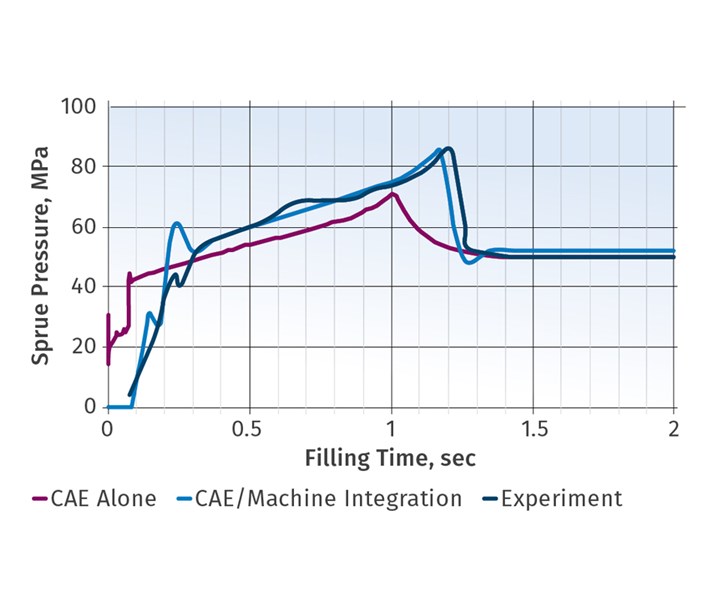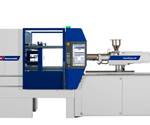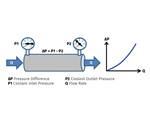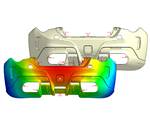Injection Molding: Simulation Factors in Material Compression and Machine Response During Injection
Moldex3D version R17 increases prediction of filling speeds and pressures.
The latest version of Moldex3D injection molding simulation from CoreTech System in Taiwan includes two factors intended to increase the accuracy of mold-filling predictions. First, Moldex3D R17, released last year, takes into account the compressibility of the melt during screw recovery and injection. Since the melt acts somewhat like a spring, disregarding this factor will result in a gap between the simulated and actual flow rates through the nozzle, runner and mold.

Including material compression and machine response in Moldex3D simulation provides a closer match to experimental results than conventional simulation without those two factors.
Second, conventional CAE predicts melt flow through the tooling based on settings for injection speeds, without considering the machine response—i.e., the response speed of the control loop to attempt to satisfy the speed settings throughout the injection profile. CoreTech offers instructions on how to set up and conduct experiments to quantify the machine response, and the new version of Moldex3D lets users set the filling speed and pressure response as part of the simulation parameters.
The accompanying graph shows the difference in simulation based on standard CAE inputs alone vs. the results of actual experiments and Moldex3D with melt compression and machine response (“machine integration”) included.
Related Content
-
Hot Runners: How to Maintain Heaters, Thermocouples, and Controls
I conclude this three-part examination of real-world problems and solutions involving hot runners by focusing on heaters, thermocouples, and controls. Part 3 of 3.
-
How to Optimize Pack & Hold Times for Hot-Runner & Valve-Gated Molds
Applying a scientific method to what is typically a trial-and-error process. Part 2 of 2.
-
Hot Runners: A View from the Bottom Up
Addressing hot-runner benefits, improvements, and everyday issues from the perspective of decades of experience with probably every brand on the market. Part 1 of 2.
















